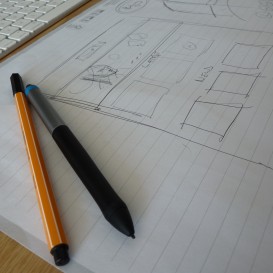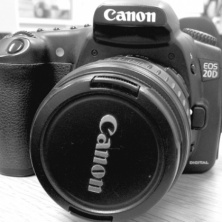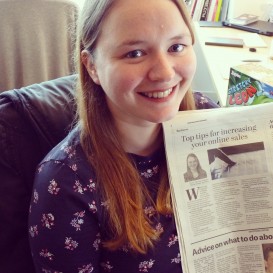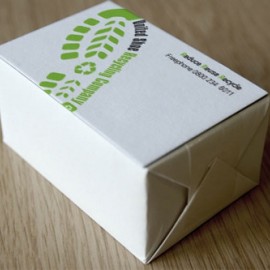5 Design Secrets From The Nexus Studio
19th September, 2017

Sketch with pen and pencil
It’s true that creative people work in a myriad of different ways. Here in Shoreham, the Nexus graphic design team is made up of James Morrison and Fiona Edmunds-Prosser. They spend every working day delving deep into their creative resources, fulfilling briefs and meeting deadlines for a huge range of different kinds of projects. But how do they keep that drive going?
Drive can be a real problem in design studios. When the pressure is on to create, create, create, there’s a good chance of the inspiration drying up along the way. I asked our lovely graphic design team how they manage the design process to ensure their work stays fresh and the ideas keep flowing. Here's what they told me.
Five design secrets from the Nexus studio
Mind map
When starting a design or marketing project, James likes to condense the brief into a detailed mind map. From here he can draw out some associated words, concepts, colours and imagery. He likes to follow his train of thought to see where it takes him and observing the tangents and pathways helps him to understand more about how he thinks.
Pinterest
Who doesn’t love Pinterest? Not only great for inspiration, but also a really useful tool for communicating a look and feel to a client before any design work has taken place. Fiona likes to put together a creative Pinterest board in the early stages of a project to help develop her thinking.
Sketching
Fiona and James both love putting pencil to paper. It’s important to visualise some very basic concepts early on and sketching by hand can be much more immediate in terms of developing an early idea.
“I try to keep in mind that the software is just a tool and try not let it dictate the creative process early on.” - James
Use your team
Once a suitable point is reached, it’s helpful to get feedback from those around you. Fiona likes to chat through ideas and visuals with colleagues to see what they think and get different perspectives on her work. There could be something vital missing that only a fresh pair of eyes can pick up on, so it’s definitely worth using your team to help get a full picture.
Take a break
If you get stuck, taking a break is one of the most valuable things you can do as a designer. Fiona and James both suggest that time away from your work is key to getting it right. James adds that he always tries to have a cooling off period when his work is at a finished point. Leaving it alone for at least a day means he can come back to it fresh and give it one final critique before sending it to the client or adding any finishing touches.
If you take part in a creative activity, whether for work or fun, it’s so important to notice the conditions that allow you to work to the best of your ability. If you haven’t quite figured it out yet, why not try out one or two of these approaches and see if they work for you? Back in May, we wrote a blog taking a close look at some scientific studies about creativity, so check it out and see what you can discover about the inner workings of the amazing human brain.







Comments
comments powered by Disqus